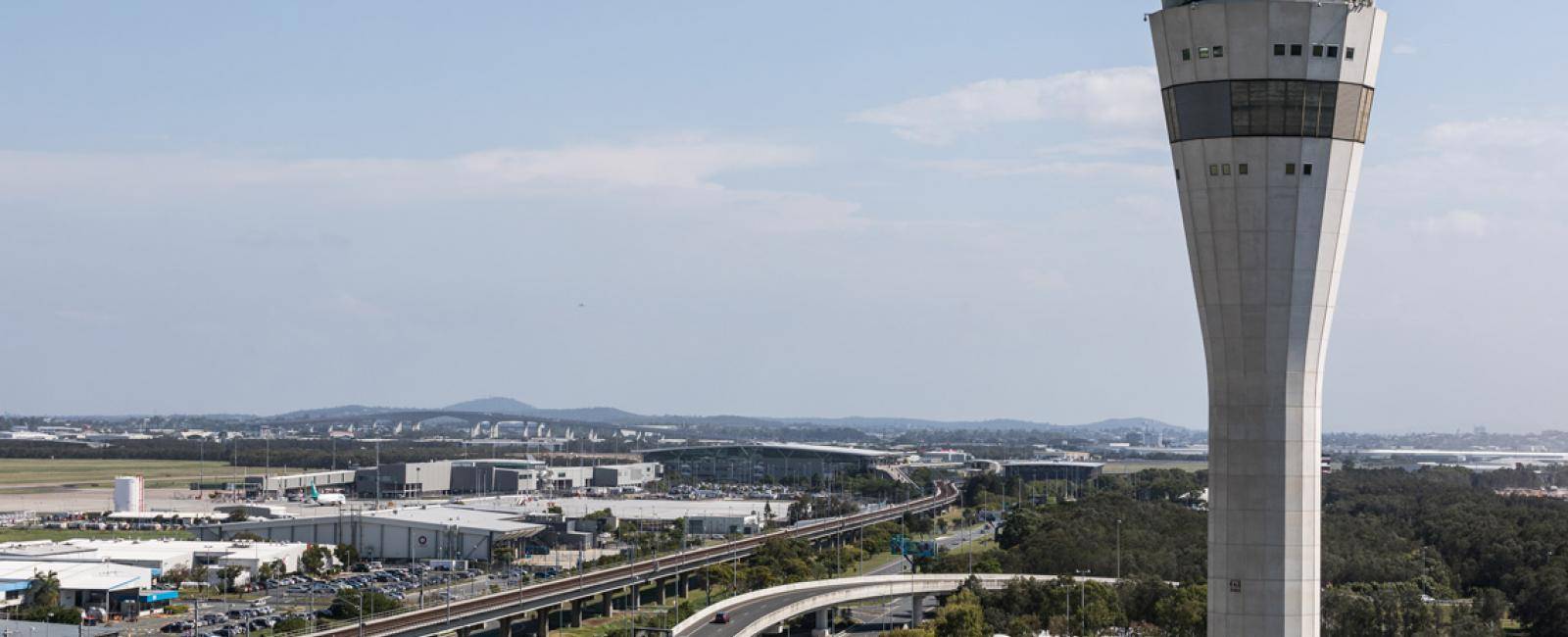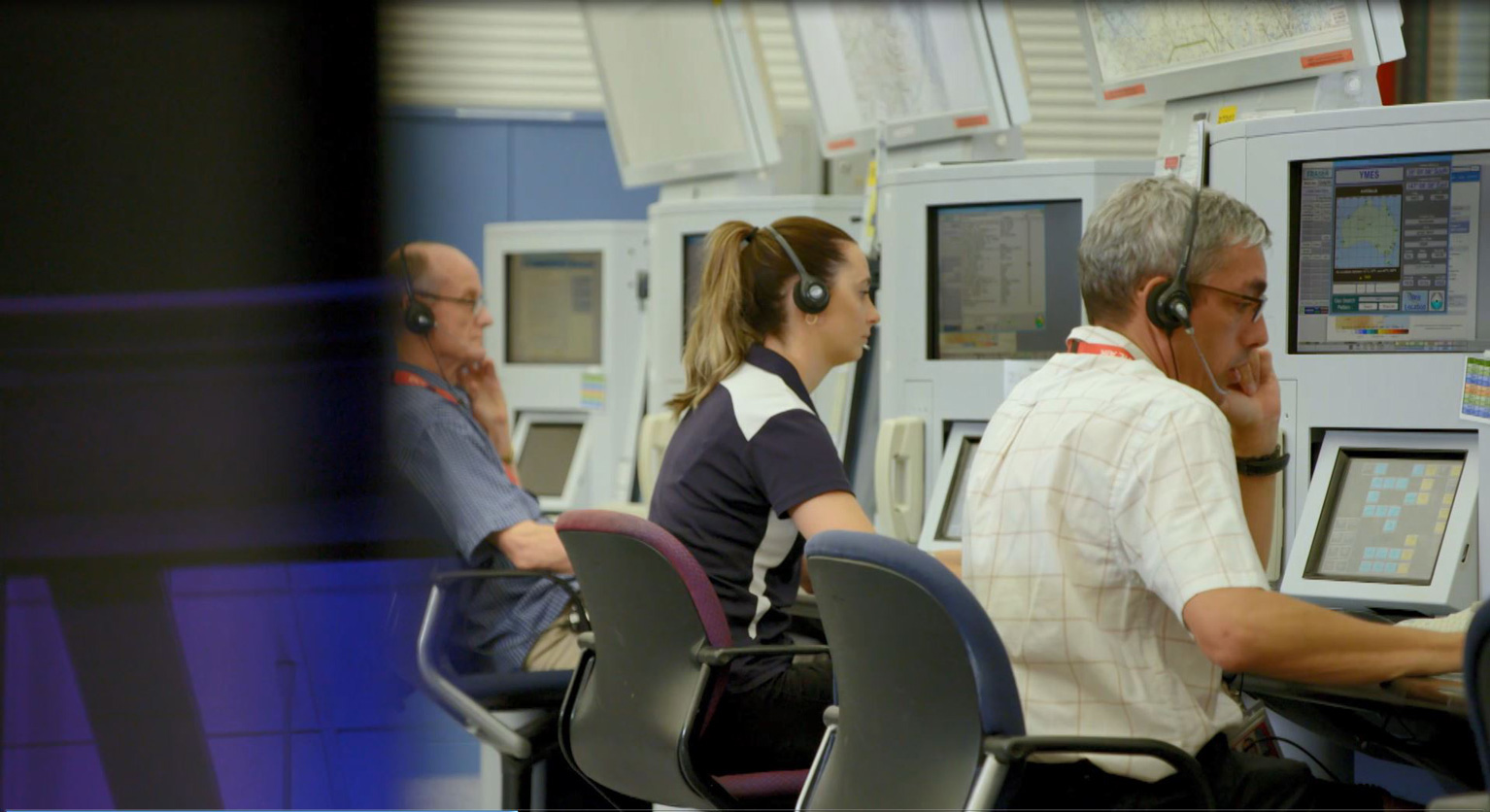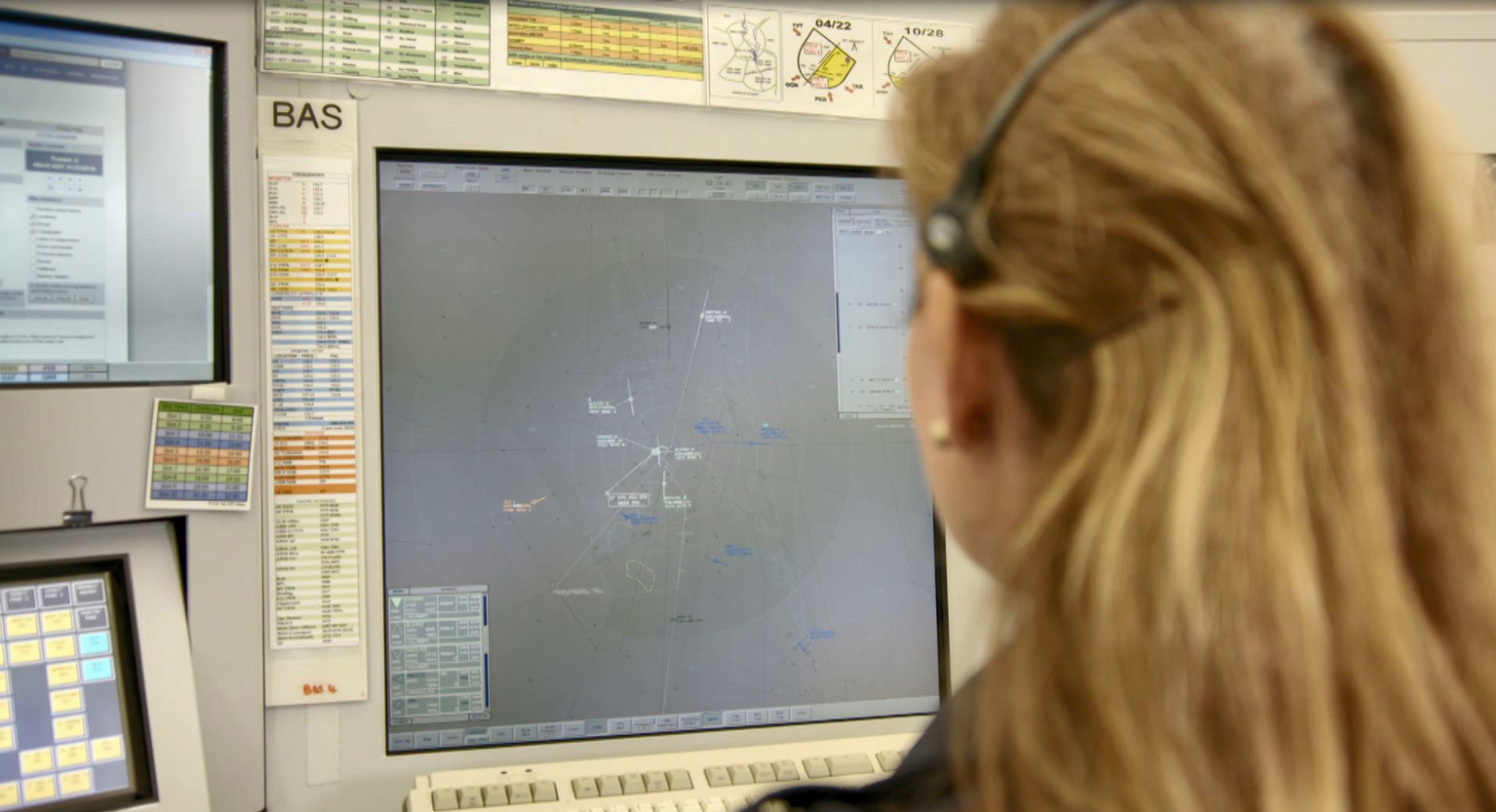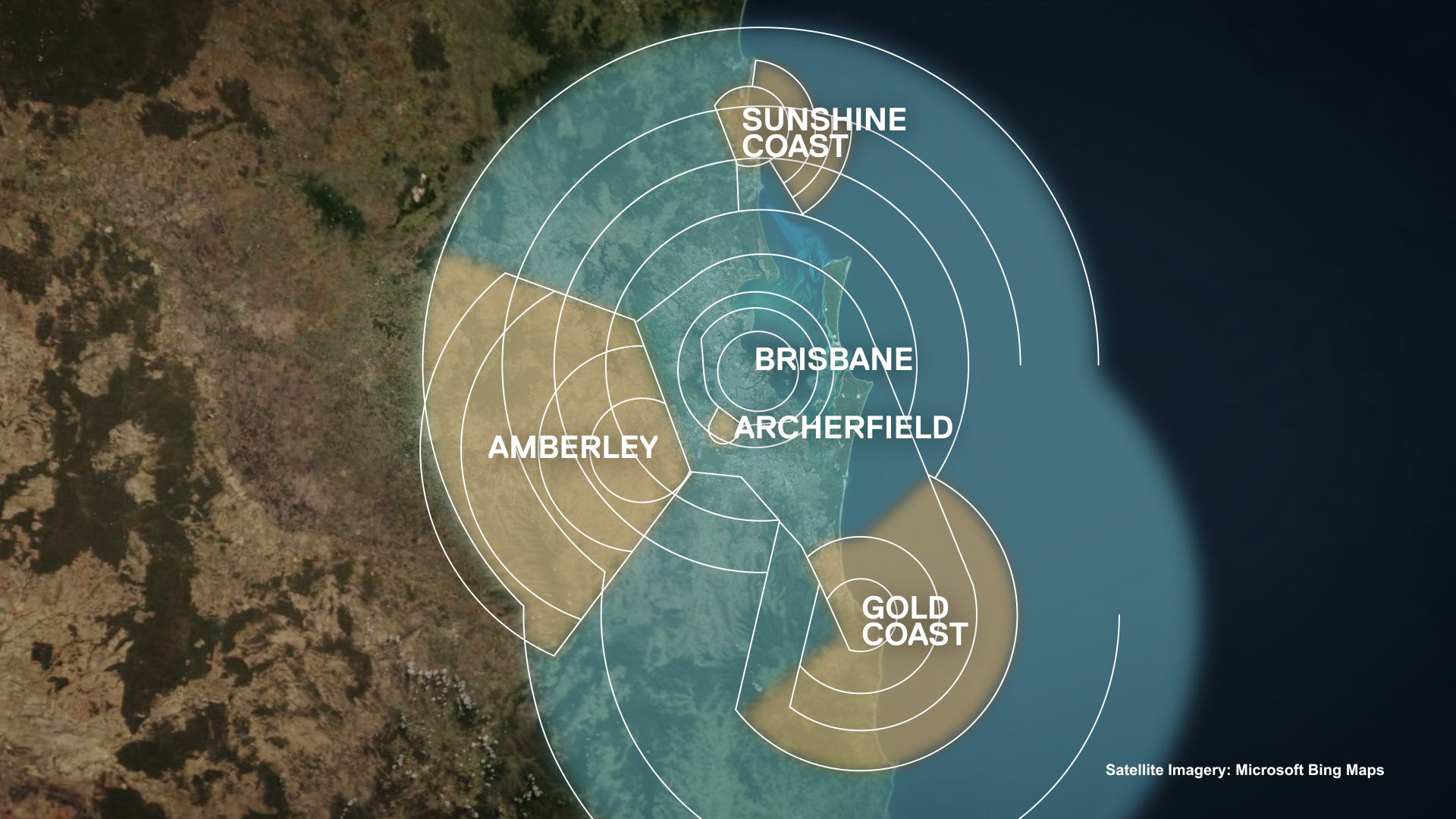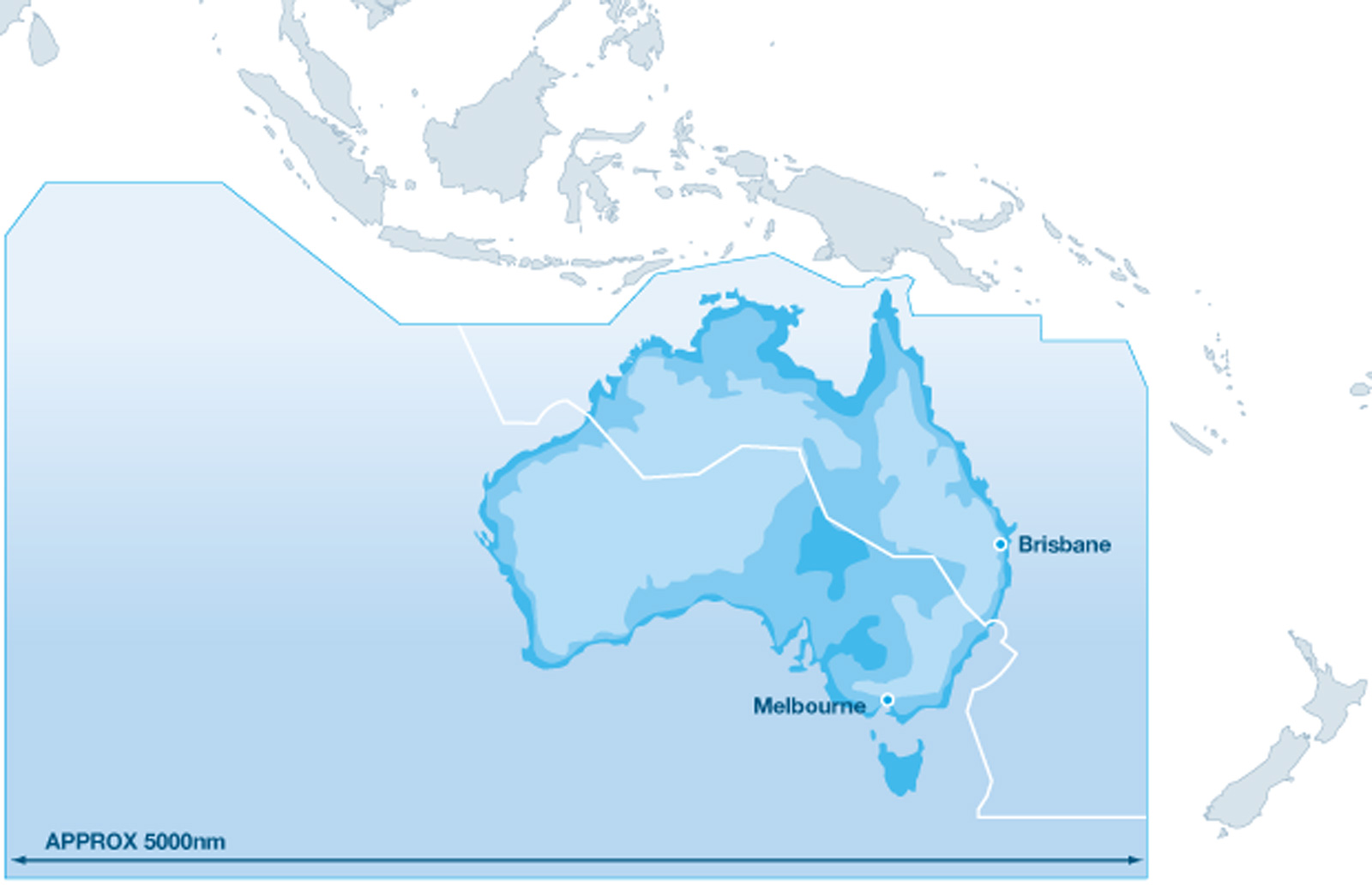
There are few occupations in the world that carry the level of challenges and constant associated risk than that of an air traffic controller. It is a mysterious and often hidden process – the synchronised chaos of well over 100,000 daily commercial flights across more than 500 million square kilometres of airspace around the globe.
Here in Australia, it is the air traffic controllers working for Airservices that are responsible for managing the safe and orderly flow of aircraft into, out of, and between airports, and they are seriously smart people. Collectively, they manage around 11 per cent or 51.7 million square kilometres of the world’s airspace including some of the busiest air routes in the world (think Melbourne, Sydney and Brisbane routes), and boy do they do it well!
Think about it this way: Every year, they manage some four million aircraft movements carrying more than 152 million passengers, but when is the last time you heard about an accident on a commercial jet aircraft in Australia?! Enough said.
Natalie Burrowes is an Air Traffic Control Line Manager at the Brisbane Centre – one of two major centres operating in Australia. She is responsible for looking after groups of air traffic controllers as well as providing supervision in the operations room. She echoes the idea that air traffic control is primarily hidden.
“People probably don’t realise how enormous the role of air traffic control is, but it’s essential to keep aircraft safe. We also respond to in-flight emergencies and ensure that there is an orderly flow of aircraft into and out of airports. We have about 3,500 employees overall, and about 1,000 of those are air traffic controllers.”
Natalie explains that the Australian airspace ranges south towards Antarctica, west towards South Africa, north towards Indonesia and east towards New Zealand and Fiji. Furthermore, the area is split into two flight information regions – the northern managed by the Brisbane Centre and the southern managed by the Melbourne Centre.
It is a big job, and given the constant problem-solving required, it is one that can be incredibly taxing. All air traffic controllers are required to take regular breaks throughout their shifts and are moved into different positions after a rest, usually every 1.5 to two hours. It allows them to stay fresh and alert, ready to tackle the many variables that may impact how air traffic is managed and how busy it is.
“Weather and storm events can affect how busy we are in Brisbane. The storm itself, if it’s here in Brisbane, can create holding as the aircraft can’t arrive and depart if there’s a storm directly over the aerodrome. It can also affect our workload if there’s a storm on-route between Brisbane and Sydney or even if there’s fog at another location.”
A lesser known fact about air traffic controllers is that they don’t all sit up in the tall control towers we see at airports. In fact, most of them don’t. There are actually three different categories of controllers - en-route, terminal and tower – and it all starts to make sense when you consider that air traffic controllers manage aircraft through all phases of flight, from terminal gate to terminal gate and everything in between.
Hayley Dennett is an En-route Controller, which means she is responsible for setting up the high-level aircraft well before they arrive at an airport.
“For a flight arriving into Brisbane, they will talk to me first. I will give them descent from 40,000 feet down to 19,000 feet. I will give them their standard arrival route so that they are all separated – inbound and outbound aircraft. Once I hand them off to arrivals, arrivals will sequence them into their port of arrival and then the approach controllers will hand the aircraft off to the tower controllers.”
Simple, right? That’s not even the half of it.
“En-route is broken up into sectors that control as far as Broome and Darwin all the way up to sectors talking to Papua New Guinea, Honiara and Nauru, as well as sectors controlling around Brisbane, Rockhampton and Cairns.”
Suzanne Anderssen is a Terminal or Approach Controller, which means she is responsible for managing aircraft that is within a thirty-mile radius of Brisbane.
“An approach controller is the meat in the sandwich between the tower controllers and the on-route controllers in that we manage the departures and the arriving traffic into Brisbane, and also the over flying traffic, the transiting traffic, the helicopter operations into and out of the city hospitals, scenic flights, survey flights…”
In Brisbane, the terminal or approach control team is made up of over forty people. Like en-route, it is broken up into several different positions.
“One of those positions would be the flow controller. The flow controller is responsible for taking aircraft that are about 200 miles out of Brisbane and talking to the en-route controllers to put the aircraft into a nice sequence. Once the en-route controllers have finished their business, basically within that 30-mile ring of Brisbane, they get handed over to an approach controller.”
It is always a fine line when it comes to air traffic control. Suzanne explains the terminal or approach controller must ensure the spacing of aircraft is exactly right – as close to each other as possible but not too close so as to compromise safety. Add to that the complex nature of the Brisbane Basin, and you can’t help but be thankful for the work our air traffic controllers do.
“Brisbane is in a rather unique position geographically. We are based between Amberley out to the west, the Sunshine Coast to the north, and the Gold Coast to the south, which means all of those airports affect what happens here at Brisbane. There’s over fliers and transiting aircraft and it tends to be a bit of an overs and unders game when we are all busy and everyone wants to use the airspace at the same time.”
Brisbane’s geography is one of the major contributors to the ever-changing nature of the job for air traffic controllers. There is a lot of unusual traffic and every day, and Suzanne explains that thirty seconds can make a difference in the positioning of aircraft which affects how she would control or manage that aircraft. This level of unpredictability would frighten most, but not air traffic controllers.
“It’s because of the people that I get to work with, the collaboration that is required for the job, the enormous sense of satisfaction in knowing how important my part or my role is in the big picture – the chain of events that happen in every second of every day. That satisfaction has kept me coming to work each day.”
Once an aircraft has lined up on final given approach, the terminal or approach controller hands them over to the tower controller who is then responsible for the visual separation of aircraft as they come in to land.
It is the final piece of the puzzle, and one that Geoff Boyd is all too familiar with as a Tower Controller at Brisbane Airport.
“We look after all aircraft departing and arriving. When they’re within a five-nautical-mile distance of the aerodrome, we clear them to land, we clear them for take-off, we organise their taxiway in and out, we make sure that all coordination is done with eternal agencies such as Amberley airspace to get them through.”
The Brisbane Tower operates 24 hours a day with a tight-knit team looking after aircraft as they make their way into and out of the aerodrome. Like the other two categories of controllers, tower control is also broken up into specific roles. The tower controller is responsible for the runway, meaning that any entry onto the runway is at their sole discretion. There is also the ground controller who is responsible for the taxiways.
“They will talk to aircraft, ground vehicles such as the Brisbane Airport Airside Operations guys, tugs going backwards and forwards. Ground has a big responsibility in respect to listening to what the tower controller does, because if the tower controller says there has been a bird stroke, they have to call the Brisbane Airport guys.”
Tower controllers have a birds-eye view of aircraft as they arrive or depart from Brisbane Airport. They are able to look out of the windows of the control tower to gauge separation and ensure the timely flow of traffic. You’d be forgiven for assuming the stress of their job would be a negative, but Geoff concedes the it is actually what makes the role interesting and fun.
“There is pressure involved with it, and we’re all aware of it, but it’s more of an immediate pressure. So, you’ll have a period during the day where it’s busy and you’ll feel that pressure or stress during that timeframe. People feel it to different extents, it depends on their comfort factor, but after you’ve finished your two hours on and you unplug, you don’t really think about it again.”
One thing you can always count on when it comes to air traffic controllers is that they understand how crucial their role is. The level of responsibility is not lost on Geoff.
“We are aware that it is a pretty serious job. The one expression was, ‘We’re not flipping burgers’.”

